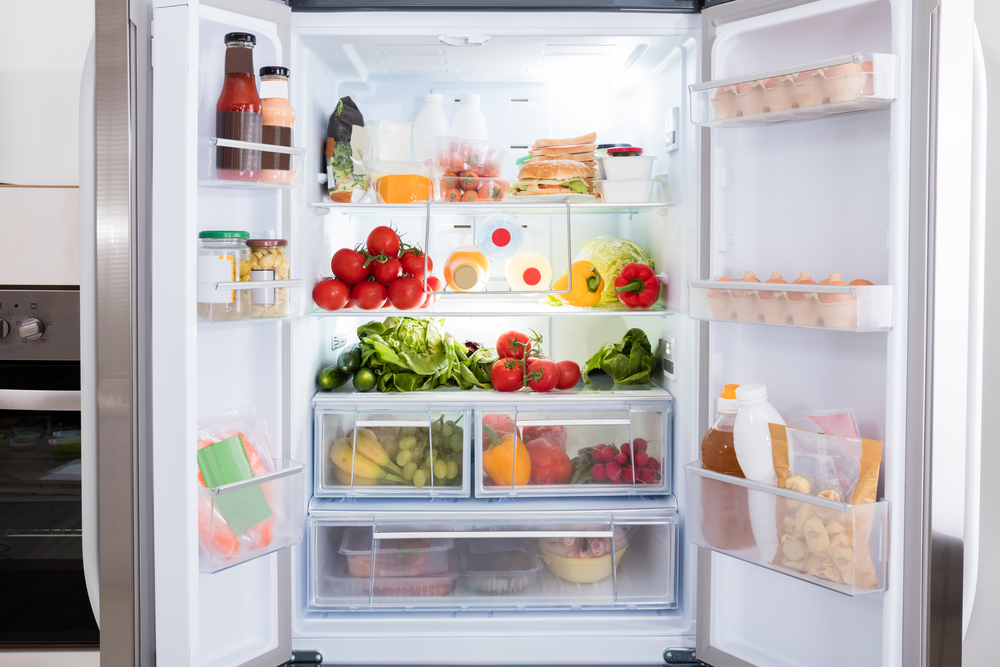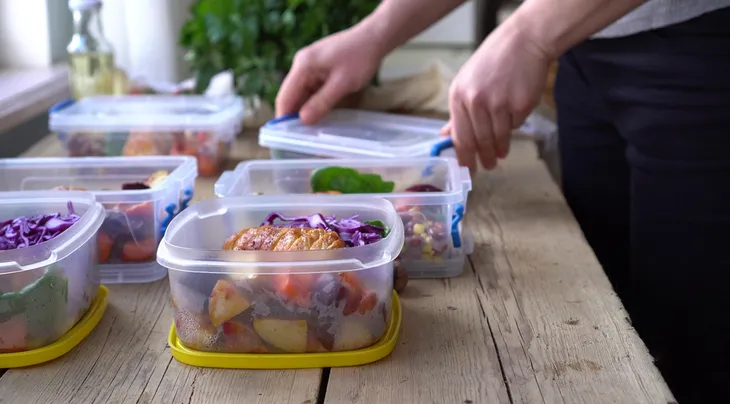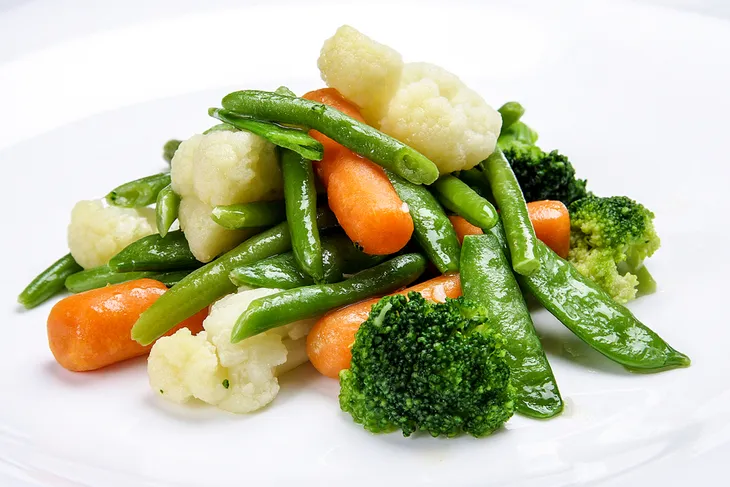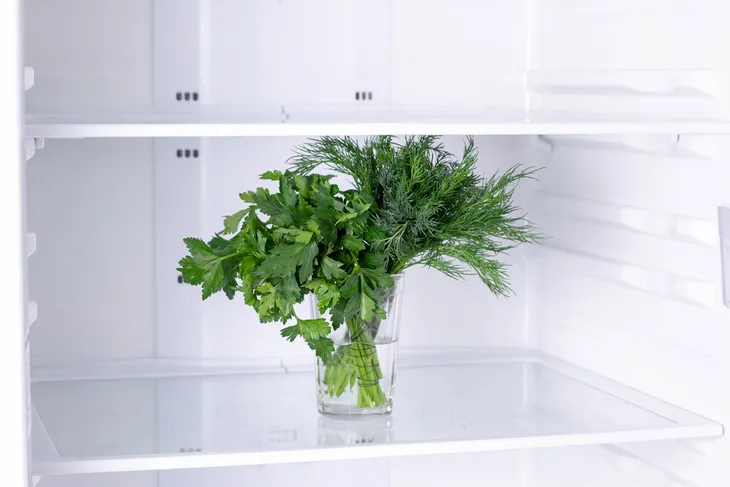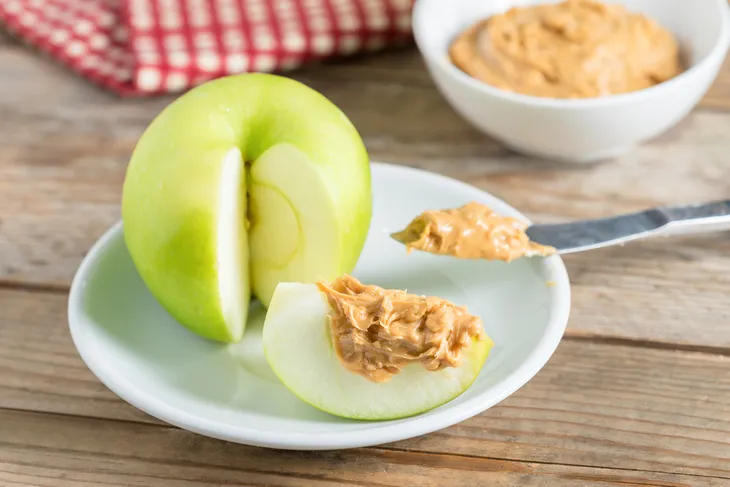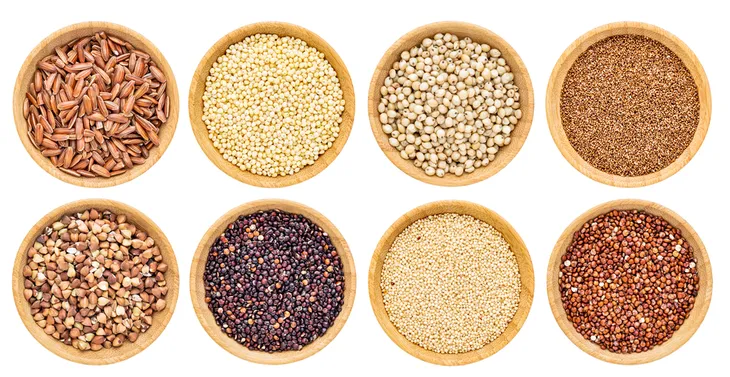You might sneak off to the refrigerator for a little late night chocolate milk or leftover cake. However, your fridge doesn’t have to be the harbinger of binge eating and shame. Believe it or not, your fridge can actually be a strong ally in your weight loss attempts if you organize it properly.
Here are eight trim-down, slim-down fridge and icebox tips…
Portion Your Trigger Foods
If there is guacamole in the fridge, watch out, I’m going back for it until it’s completely gone. Luckily, I know that guac is among my trigger foods (i.e., as is bean dip and leftover pasta), which is why I proactively portion these foods into smaller, single serve containers for fridge storage.
The single serving sizes prevent me from overdoing it on the whole container of guac. Instead, I will eat just enough of the healthy fat dip with pita, fresh cut veggies, or on a sandwich. And I’m less tempted to break into another container full.
Slice, Steam, and Store Veggies
Believe me when I say that pre cooked vegetables are just as tasty in a stir fry and on a sandwich as cooked fresh veggies are. I purposefully slice, steam, and store a colorful array of portobello mushrooms, red and green bell peppers, onions, zucchini, and bok choy at the start of each week.
This way, evening dinners are made easy and much healthier when I can reach into a shelf in the fridge and pull out the perfect stir fry, salads, soup, or sauce veggie base.
Healthier Spicing Options
I understand that buying fresh herbs can be wasteful—particularly if you’re cooking for just one. An entire bundle of parsley, cilantro, or basil can quickly get mushy in your fridge, leaving you to opt for salty spice blends and sugary bottled sauces instead.
However, you can preserve your herbs by storing them like flowers in the fridge. Place them stems-down in a jar or cup of water and cover gently with a plastic bag to keep them fresh for longer. Each time you open the fridge, you’ll see your herbs on display, which will tempt you to cook with them more often.
Put Veggies on Display
It makes sense to tuck all of your fresh veggies into the crisper—that’s what it’s meant for, after all. However, when you banish your fresh vegetables to the nether-regions of your crisper, they become out of sight, out of mind.
Visual cues are powerful when we open the fridge to make a meal—we often pick up what we see first. So banish those comfort food leftovers (i.e., pasta or casseroles) to the back of the fridge and place vegetables out front, right at eye level.
Water Down Juices
I understand that many people don’t dig plain old water. However, you can still have your juice while keeping the natural sugar and caloric content low. Try cutting your juice with sparkling water or seltzer to calories while giving beverages that fizzy pop!
I instantly cut my juices by filling two containers or pitchers with half juice half sparkling water before I even put it in the fridge. You can also make a pitcher of fruit infused water by mixing tap or filtered still water with slices of citrus or frozen berries. This will add excitement to regular old H20.
Arrange Healthy Snack Combos
Make reaching for wholesome, healthy snacks that much easier by literally pairing them together in your fridge. For instance, group low fat cottage cheese and grapes, raw nut butter and apples, whole grain pita and hummus close together so you’re not searching the back of the fridge for healthy snack options.
By paring smart snack combos, nutritious snacking becomes a no-brainer. Every time you open your refrigerator door you’ll see healthy noshes. I even do much of the slicing and dicing of fruits and veggies on Sunday so they’re ready to grab and go all week long.
Store Only Natural Sweeteners
Fresh fruit preserves (made unsweetened), real maple syrup, local honey, unsweetened apple sauce, organic apple butter, and raw nut butters are all decadent on toast without the added refined sugars.
So banish refined sugars (i.e., white sugar, jams, table syrup, brown sugar) from your pantry and instead, fill your fridge with natural sweetness that can be used in baking, on oats, and to sweeten stir fry sauces—naturally!
Precook Healthy Grains
The problem with preparing whole grains for meals is that it takes between 35 and 45-minutes to cook a package of quinoa, wild rice, or barley.
I’ve gotten into the healthy habit of precooking my grains and storing them in single serving portion sizes in the fridge. So when I make a stir fry or need a little starch to mix with my veggie chili—voila, it’s already in the fridge waiting for me.
